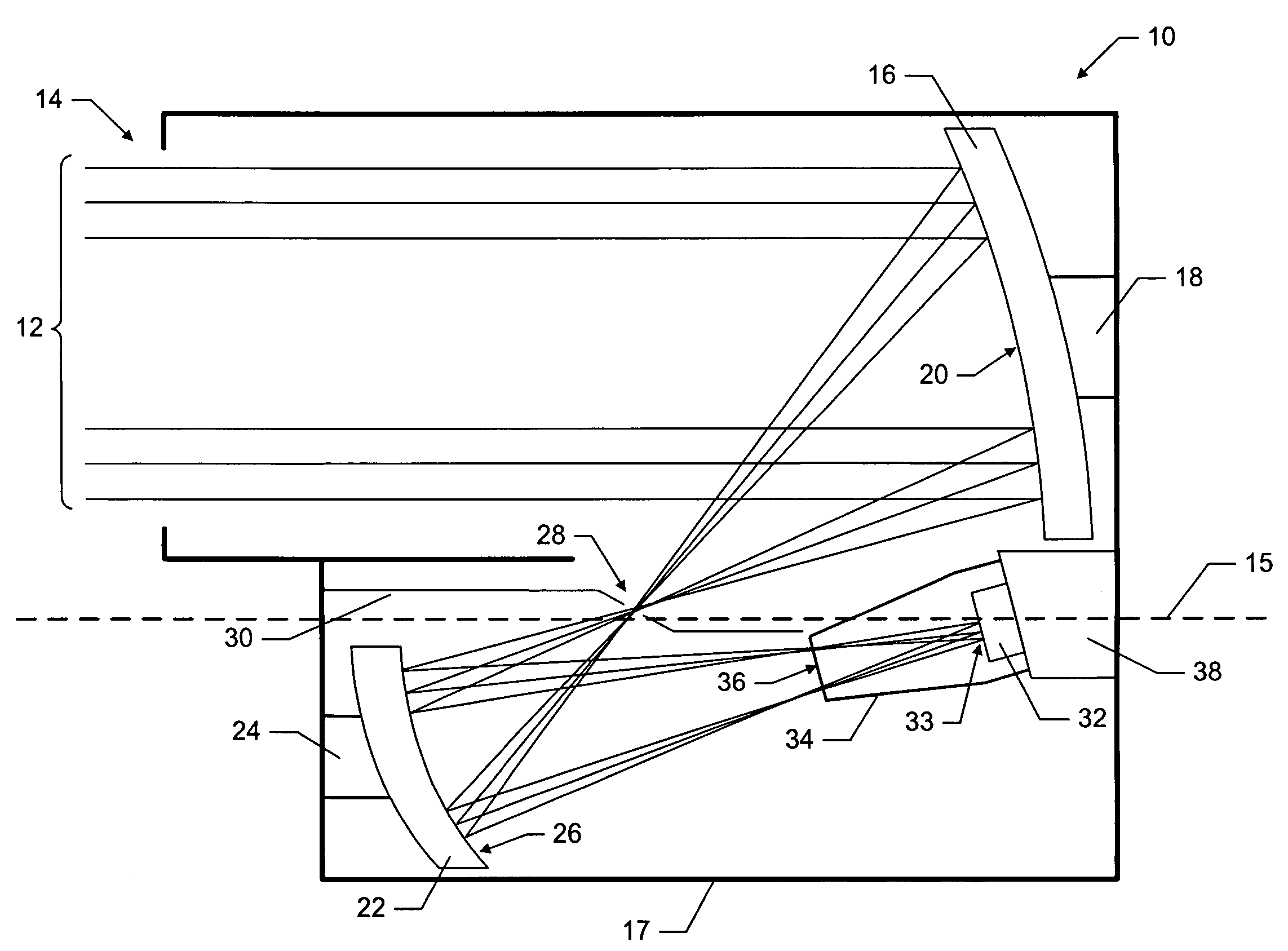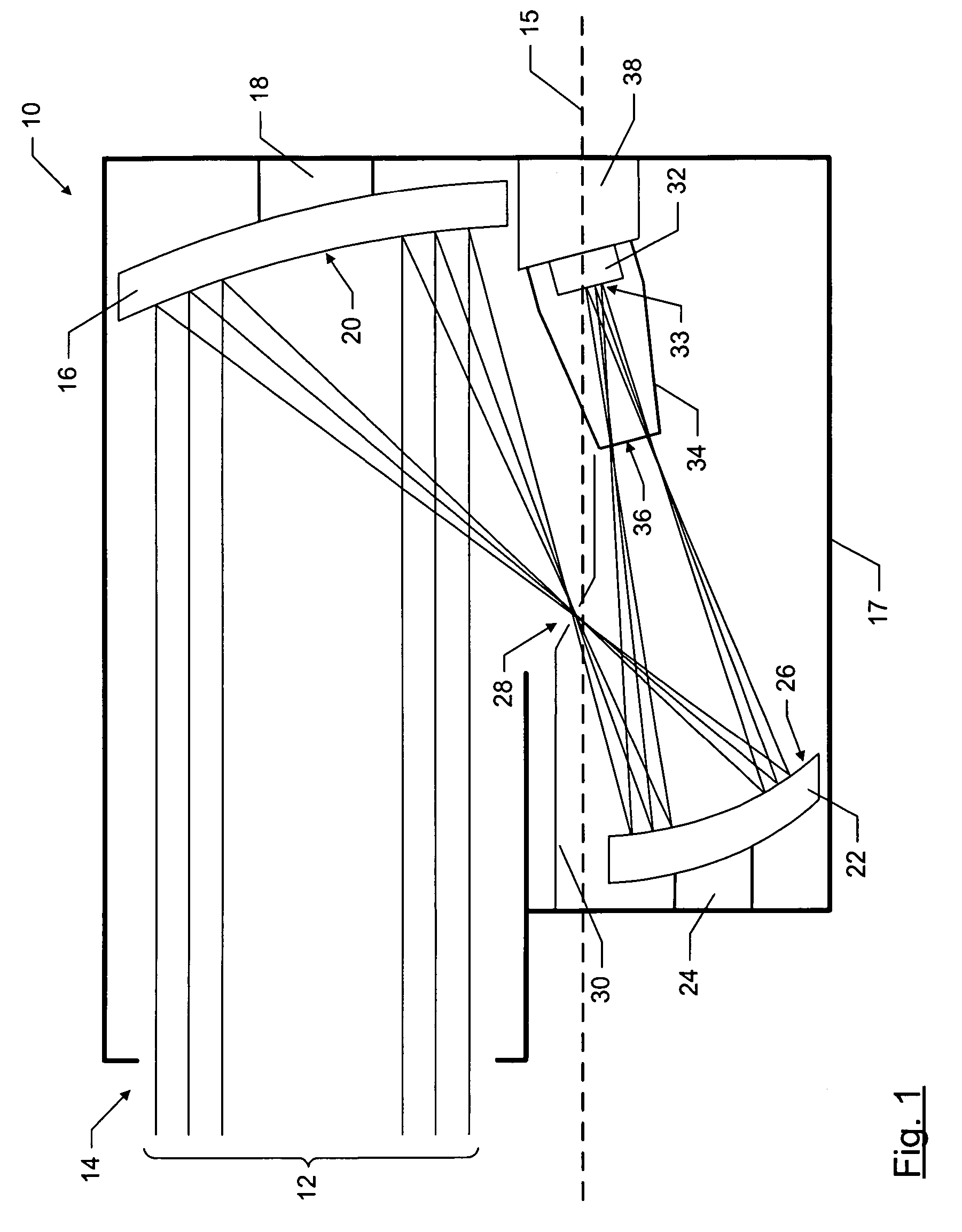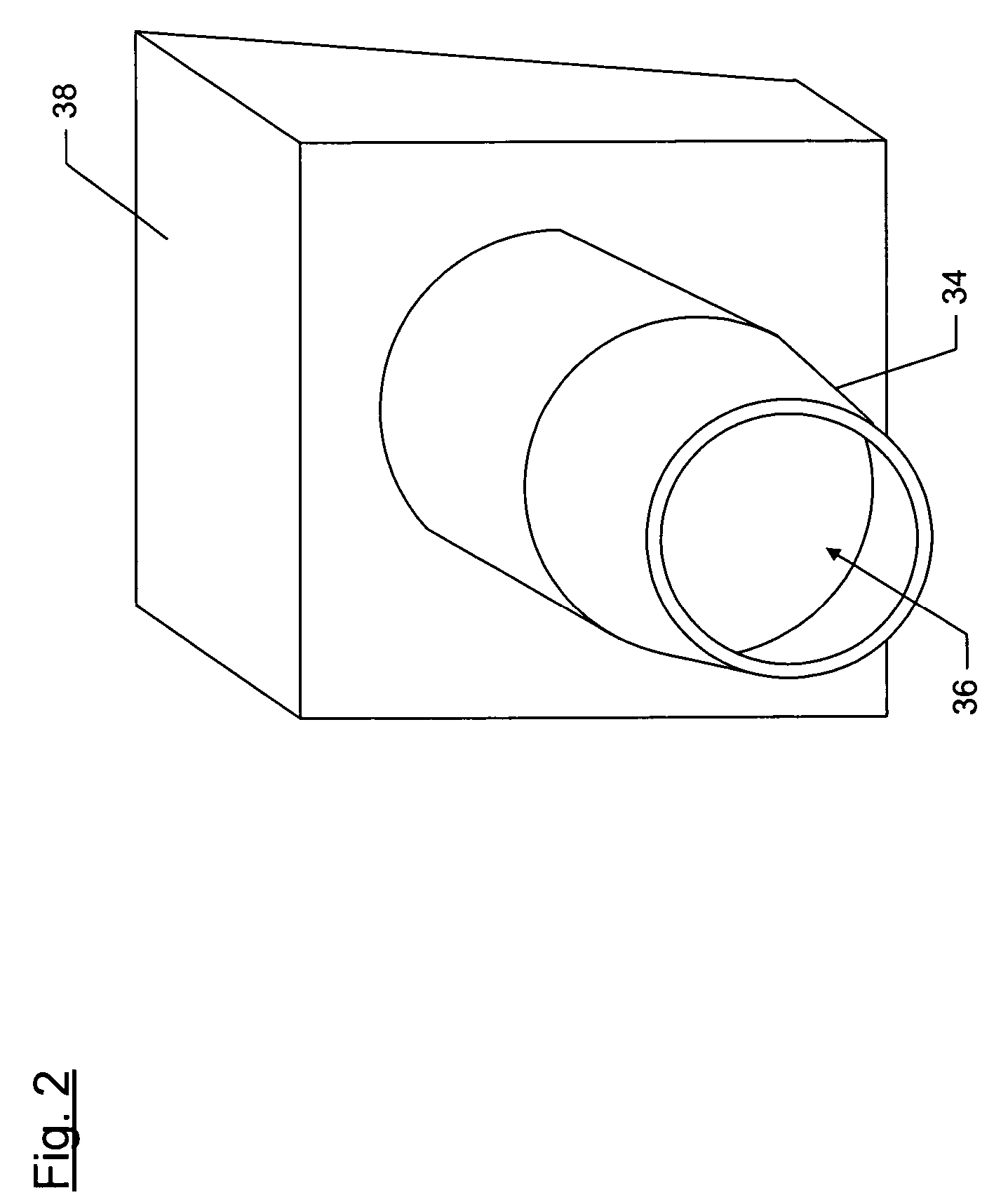Two mirror re-imaging telescope
a mirror re-imaging and telescope technology, applied in the field of telescope systems, can solve the problems of less physical compactness and weight of two mirror telescopes, poor image quality very stringent volume and weight limitations of space-based applications, and achieve the effects of less physical compactness and weight of two mirror telescopes, poor image quality, and advantageously reduced telescope weigh
- Summary
- Abstract
- Description
- Claims
- Application Information
AI Technical Summary
Benefits of technology
Problems solved by technology
Method used
Image
Examples
Embodiment Construction
[0021] The present inventions now will be described more fully hereinafter with reference to the accompanying drawings, in which some, but not all embodiments of the inventions are shown. Indeed, these inventions may be embodied in many different forms and should not be construed as limited to the embodiments set forth herein; rather, these embodiments are provided so that this disclosure will satisfy applicable legal requirements. Like numbers refer to like elements throughout.
[0022]FIG. 1 is a side elevation schematic of an infrared telescope, in accordance with one embodiment of the present invention. As shown in FIG. 1, infrared light in the form of beam path 12 enters telescope 10 through eccentric pupil 14. As discussed above, pupil 14 is eccentric since the pupil is offset from the optical axis 15, which is shown as a dashed line in FIG. 1. As discussed above, an off-axis telescope views the reflected image on an area of the image plane that is slightly offset from the optic...
PUM
 Login to View More
Login to View More Abstract
Description
Claims
Application Information
 Login to View More
Login to View More - R&D
- Intellectual Property
- Life Sciences
- Materials
- Tech Scout
- Unparalleled Data Quality
- Higher Quality Content
- 60% Fewer Hallucinations
Browse by: Latest US Patents, China's latest patents, Technical Efficacy Thesaurus, Application Domain, Technology Topic, Popular Technical Reports.
© 2025 PatSnap. All rights reserved.Legal|Privacy policy|Modern Slavery Act Transparency Statement|Sitemap|About US| Contact US: help@patsnap.com



